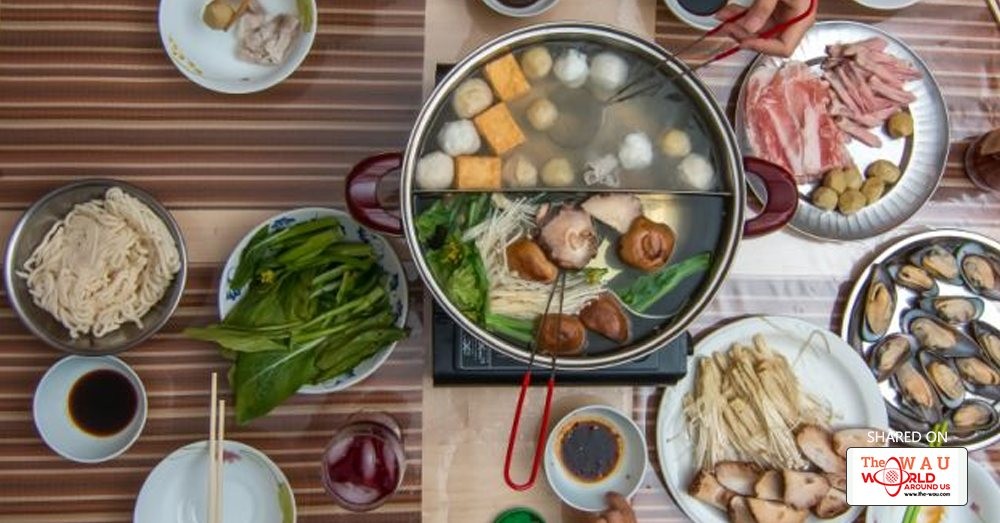It’s a cold yet clear day in December and I’ve just witnessed one of the most spectacular sights anywhere in the world. I’m at Lake Kawaguchiko, one of the vantage points to capture a picture postcard view of Japan’s iconic Mount Fuji. I’m still under the spell of ‘Fujisan’ as we arrive at a popular local restaurant – Kosaku Hoto Kosaku. Diners come from all over Japan to sample Hoto, a delicacy in this prefecture (Yamanashi). Local legends suggest that a regional warlord and his samurai always stopped for Hoto before heading into battle. I kicked off my shoes before entering the restaurant with traditional Japanese ‘low’ seating.
Nabemono – the Japanese Hotpot
Thick wheat noodles (that resemble extra thick Udon noodles) cooked with pumpkin and other seasonal vegetables cooked in a flavoursome miso soup broth and served in an iron pot. It’s just the kind of ‘meal by itself’ that hits the spot on a cold day. If the views of Mount Fuji were outstanding so was this hotpot meal. You often hear about Sushi and Bento box meals in Japan but this was probably one of the most satisfying meals I’ve had in Japan.
Hoto is certainly not Japan’s best known hotpot dish (Nabemono is the local term for hot pot dishes). That distinction probably belongs to Sukiyaki (sliced beef with assorted vegetables and tofu in a soy sauce) and the more modern Shabu-Shabu (an onomatopoeia that takes its name from the swishing sound the ingredients make inside the hotpot). This dish is considered a rare delicacy largely because of the high-grade beef (wagyu is used too). The beef and vegetables are slow boiled in a seaweed broth and the soup is usually consumed at the end of the meal after the beef and vegetables.
...[ Continue to next page ]
Share This Post














